As the season slowly drags out to a disappointing close in the Premier League, we can still at least be excited about competing for a trophy as we begin the semi-final of the Europa League. In this two legged match we face Atlético Madrid, a team that is quite well known to us, and us to them, even though we’ve only ever played against them competitively on two previous occasions.
Club Atlético de Madrid, S.A.D., more commonly known simply as Atlético Madrid, are one of the most successful clubs in Spanish football. The history of the club goes back to the founding of Athletic Club de Madrid in 1903, as a branch of Athletic Bilbao. A year later, in 1904, they were joined by dissident members of Real Madrid, and played their early games at the Ronda de Vallecas stadium, which was situated in a working class district on the south side of the Spanish capital. In 1921 Athletic Madrid became an independent club from Athletic Bilbao, and in 1923 the club moved to the Estadio Metropolitano de Madrid, which had a capacity of 35,800. They subsequently stayed there until 1966 when they moved to their present home at the Estadio Vicente Calderon, and after which the Metropolitano was demolished. The club will soon move to the Olympic Stadium, which was being built as the city was bidding to host the 2016 Olympic Games (which was awarded to Rio de Janeiro).
The early days for the club were successful enough to be invited to join the newly formed Primera Division of La Liga in 1928. But, in 1930 they were briefly relegated to the Segunda Division, returning to the Primera in 1934, only to be relegated again in 1936. That relegation didn’t actually take place though as the Spanish Civil War had broken out and with Real Ovieda unable to play due to a bombed out stadium, Atlético were able to remain in the Primera by winning a play-off against CA Osasuna.
After the war was over, La Liga resumed and Atlético had merged with Aviacion Nacional of Zaragoza to become Athletic Aviacion de Madrid. The Aviacion club had been formed by members of the Spanish Air Force in 1939 and had been promised a place in the Primera Division, but were then denied by RFEF (the Spanish Football Federation). A compromise solution was to merge with Atlético de Madrid, and then take the place of Real Ovieda for the 1939-40 season.
That first season after the civil war was a successful one with the club being crowned as champions, which was the first time for the club but not to be the last. They retained the title the following season, but were unable to gain any more silverware for the rest of the decade other than the Copa Presidente de la RFEF in 1947. In that same year, the club decided to drop the association of their name with the military and became Club Atlético de Madrid, as we know them today.
One similarity between Atletico and Liverpool is that both clubs began playing in blue and white strip but later changed to red and white. The explanations for the original choice and the later change are uncertain, but it appears that the club simply agreed at first to adopt Athletic Bilbao’s blue and white stripes. The change to red and white stripes is thought to have occurred owing to the fact that material for new red and white striped shirts was in abundance as it was taken from remnants from the mattress manufacturers in the area, who used red and white striped cloth, and the cheap left-overs were easily made into football shirts. The decision to change and the choice of colours led to the club becoming known by the nickname Los Colchoneros – “The Mattress Makers”.
That explanation is probably more football fiction rather than fact, and an alternative explanation for the change is that both the Athletic Bilbao and Athletic Madrid teams originally purchased blue and white Blackburn Rovers kits in England, but when the buyer made the trip in 1911 and could not find the right shirts he decided to buy Sunderland’s red and white striped kit instead. Bilbao took the shirts and combined them with black shorts, and Madrid took the same red and white striped shirts but kept the blue shorts of Blackburn.
Atlético are also known by the simpler nickname Los Rojiblancos – “The Red and Whites” – because of the shirt colours. Another nickname for the club is Los Indios – “The Indians” – which is believed by some to have arisen from the numbers of South American players that were brought in after restrictions on foreign players was lifted. Other theories on this nickname are that the club acquired the name when the new stadium was “camped” on the side of the riverbank, or that they are the traditional enemy of Los Blancos – “The Whites,” i.e. Real Madrid.
The 1950’s were the beginning of a golden era for Atlético with La Liga titles in both 1950 and 1951, and four more before the end of the 1970’s (1966, 1970, 1973,1977). They also won the Copa del Rey five times in the same period, for 1960, 1961, 1965, 1972, and 1976. In European competition they won the UEFA Cup Winners’ Cup in 1962, and were runners-up in the European Cup in 1974, losing to Bayern Munich. That appearance in the final allowed them to compete in the Intercontinental Cup a few months later when Bayern Munich declined to participate, leading to Atlético’s invitation to represent Europe, where they beat Independiente of Argentina 2-1 over two legs to take the trophy.
Shortly after the end of the 1973-74 season ended, veteran player Luis Aragones was appointed as manager of the club, which was to be the first of four separate times in between managing Barcelona, Sevilla, Real Betis, Valencia, and the Spanish national side (winning the Euro 2008 trophy for Spain). Other famous managers for Atlético include César Luis Menotti (who won the 1978 World Cup as manager of Argentina), Arrigo Sacchi (manager of Italy as runners- up in the 1994 World Cup), Ron Atkinson (for a turbulent 3 month spell in 1988-89 after leaving Manchester United), and Claudio Ranieri (1999-2000, before leaving for Chelsea).
If 1950 saw the beginning of a golden era for the club, it could just as easily be said that 1987 saw the beginning of a troubled era. In that year, politician and businessman Jesus Gil became president, and was hoping to return the club to the glory days after ten years without a La Liga title. Gil spent heavily, bringing in high-priced players such as Portuguese star Paolo Futre, and later on Diego Simeone, Christian Vieri, and Juninho, but could not find the success that he craved. It was during the next ten years that “interesting times” occurred, with Gil hiring and firing no less than nine managers (starting with Big Ron Atkinson and continuing with Menotti, Javier Clemente, and Luis Aragones one more time) before the end of 1996 when the title was finally won under Radomir Antic, who also won the Copa del Rey the same year for a rare “League and Cup Double.” Antic managed to stay for three seasons, being replaced by Arrigo Sacchi for six months before Antic returned for a short spell. One of Gil’s most controversial actions was the closing down of the club’s youth academy, which boasted Raul Gonzales, one of the country’s future superstars. Raul went across town to rivals Real Madrid, becoming one of the Galacticos for Los Blancos.
In 1999, Gil and his board of directors were suspended following investigation into the misuse of club funds, and the club fell into administrative management. At the time Claudio Ranieri was the manager, and as the club were in disarray and performances on the pitch reflected that, he decided to resign rather than be sacked. Relegation followed at the end of the season, in spite of some better performances that saw Atlético reach the Copa del Rey final.
Atlético spent the next two seasons in the Segundo Division before returning to the Primera in 2002 as Segundo Division champions. Luis Aragones was in charge once again but for the last time, and it was he who was responsible for guiding a young Fernando Torres in his early career with the first team. In 2006, Torres was joined by Argentine internationals Costinha and Maniche, and Portuguese international Aguero. By the end of that season, Torres had decided to leave Atlético and join Liverpool for a fee of around £26m, with Liverpool’s favourite Sangria sipper Luis Garcia going the opposite way as part of the deal. The money that Atlético received was then spent on bringing in one-time Manchester United striker Diego Forlan. Shortly after that, the club signed Simao from Benfica, and former Arsenal striker José Antonio Reyes (while out on loan to Real Madrid).
The list of former Atlético players is quite impressive, with superstars such as stirker Hugo Sanchez (later with Real Madrid), goalkeeper Miguel Reina (father of another famous ‘keeper), German international Bernd Schuster, Spanish midfielder José Luis Caminero, Dutch striker Jimmy Floyd Hasselbaink (who left for Chelsea along with Ranieri in 2000) and a long list of other internationals. Some current players that are worth watching (besides the ones already mentioned) are Argentinian striker Sergio Aguero, Columbian midfielder Luis Amaranto Perea, and Spanish centre back Pablo Ibanez.
At the end of the 2007-08 season, Atlético finished fourth in La Liga and earned a place in the 2008-09 UEFA Champions League, where they were drawn in the same group as Liverpool. The two clubs looked forward to facing each other, but none more so than Fernando Torres, Luis Garcia, and another former Liverpool player Florent Sinama Pongolle who signed for Atlético earlier that summer. It was a cruel blow for El Nino that he was injured before the first meeting in Madrid in October 2008, and was still unable to play in the return match at Anfield a few weeks later. Both games ended at 1-1, but Atlético were probably the better side over the two games. Liverpool were lucky to get a late goal at Anfield from a controversial penalty. Atlético had gone ahead in the first half through a goal by Maxi Rodriguez, who of course is now one of us after a free transfer in January this year.
The news this past weekend that Torres will be out for the rest of the season, owing to his need for knee surgery must be a devastating blow to him as he must have been really looking forward to this meeting, especially after missing out last time. Who knows when we’ll have the opportunity to face them again, other than for a specially arranged friendly, as we did during the end of last summer’s pre-season fixtures? In that one (last August), we lost 2-1 at Anfield, with Forlan and Aguero scoring for Atléti and Lucas getting a late consolation for the Reds.
The 2009-10 season has not been good for Atlético. The season began with a series of disappointing results, and even though they had qualified for the Champions League again they were winless in all six group stage matches, managing only three points and a goal difference of -9. They currently sit in 10th place in La Liga, and have won 11 and lost 14 of their 33 games played so far. Manager Abel Resino was sacked in October, as the club were stuck in 15th place from the disastrous early results, and was replaced by current manager and former player (1979-88) Enrique “Quique” Sanchez Flores. They’ll be playing for pride and the chance to pick up a trophy as much as we are, and there’s no doubt that this is going to be a tough challenge for us.
Come on you Reds!





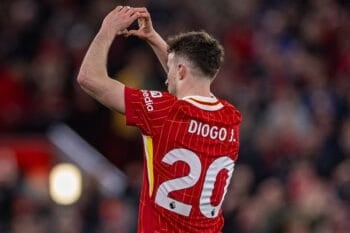
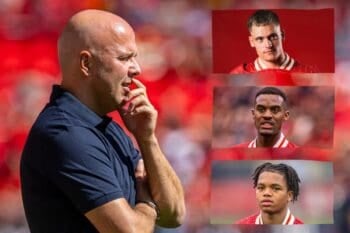


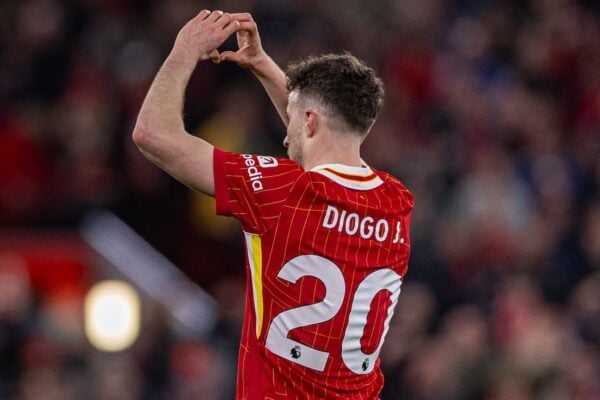







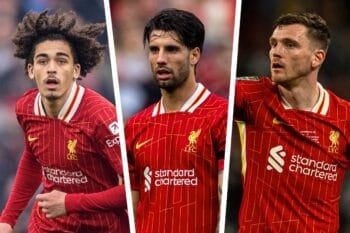

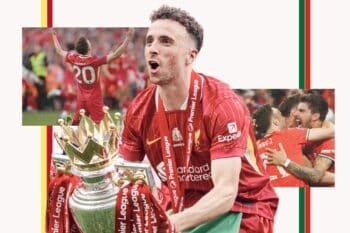
Fan Comments